 |
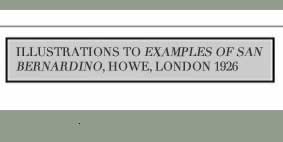 |
 |
 |
|||||||
 |
 |
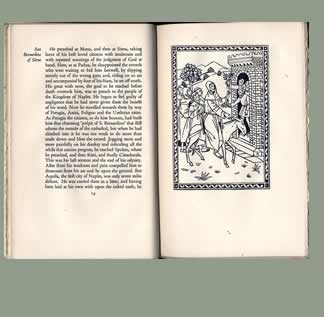 |
||||||||
 |
||||||||||
 |
 |
 |
||||||||
 |
||||||||||
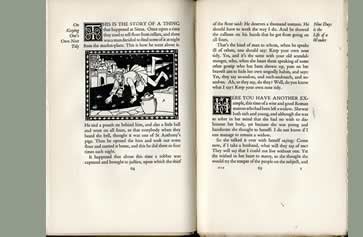 |
 |
 |
||||||||
 |
 |
 |
||||||||
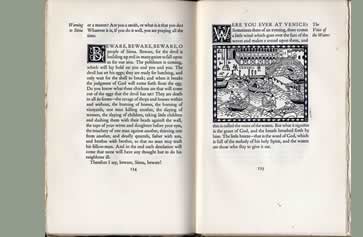 |
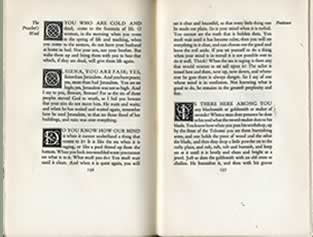 |
 |
||||||||
 |
 |
 |
||||||||
Robert Sargent Austin 1885-1973, studied in Leicester, and after War service, with Frank Short at the Royal Academy Schools and was awarded the prestigious Rome Scholarship in 1922. He was to return to the Royal College in London in 1926, the year of the publication of his illustrations to this book, influenced by fifteenth century Florentine book illustration, and in this year married its writer Ada Harrison. Rather than woodcuts, Austin created a similar effect here with line blocks made from pen and ink illustrations. After 1926 he replaced the choice of etching with engraving, a mediumof printmaking he pursued for the rest of his life. His participation in the Printmaking Revival of the inter War period brought a fastidious, nervous but precise line influenced by German printmaking of the Renaissance period, such as Durer and Schoengauer. He was capable of achieving a great intensity of mood and expression even in landscapes and depopulated environments. His original engraved plates were discovered in 2007 allowing us to see his characteristic mode of cancelling plates. Rather than frenetic obliteration or destructive drilling of the metal surface, he scored individual lines that while changing the surface as published, nevertheless stressed the implicit geometricality of their compositions. Walking in Burnham Overy Staithe in the early seventies I remember passing the converted chapel that was his studio in later days. I have added some enlargement of selected plates.
single |